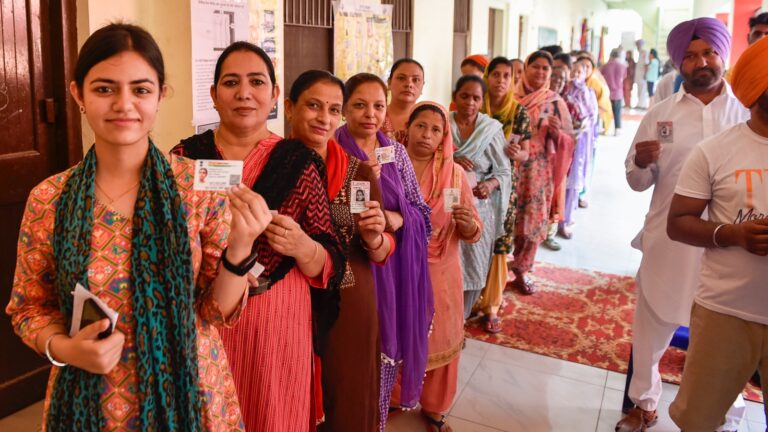The election result is a breather. India desperately needed some leverage to curb the growing power of a divisive prime minister, and Indian voters have now provided that leverage. 2024 Election Indian democracy.
How should we interpret the election results? What lies ahead? Prime Minister Narendra Modi and the BJP had expected a landslide victory and hoped to win more than 400 seats in the Indian parliament. Judged by that standard, this result is a major setback for PM Modi. The BJP lost 63 of the 303 seats, winning only 240 seats, far short of the 272 seats needed to form a majority government. However, it is also noteworthy that the vote share won by the BJP in this election has hardly decreased. It has slightly decreased from 37.3% in 2019 to 36.6% in 2024. In other words, PM Modi and the BJP remain a powerful political force in India. The sharp decline in the BJP’s presence in parliament is not due to PM Modi’s declining popularity, but rather the result of the opposition’s success in working together. The question that emerges from the election is why PM Modi and the BJP failed to increase their popularity and what are the strengths and weaknesses of the opposition.
Simply put, Modi’s failure to rise up the ranks is due to his mediocre performance in power for a decade and a ceiling on Hindutva’s popularity.
As for achievements, one must carefully separate reality from the hype of the Modi era. His government often distorted the facts and exaggerated economic achievements thanks to corporate patronage and a subservient media. According to World Bank figures, India’s average annual economic growth rate under Modi was slightly lower (less than 6% even excluding the COVID-19 pandemic) than, for example, under the previous Congress government from 1991 to 2013 (more than 6%). What these aggregate figures hide is the government’s notable failure to pursue the “Make in India” promise that was supposed to boost manufacturing and create jobs. Nothing of the sort happened. India’s industrial growth under Modi remained sluggish and few jobs paying a living wage materialized. This was accompanied by a staggering increase in economic inequality. According to the World Inequality Report (2021), between 2012 and 2020, the share of wealth owned by the top 1% of Indians increased from 30.7% to 42.5%, while the share of the bottom 50% fell from 6.4% to 2.8%. Rahul Gandhi and other opposition politicians have noticed the change and, naturally, raised it as part of their campaign against Modi.
Prime Minister Modi and his supporters have often claimed that he has significantly expanded welfare systems in India. Most of these claims are unsubstantiated. Data shows that central government spending on education and health has barely increased during Modi’s administration. Social welfare spending, on average, accounted for about 22% of total government spending, the same as under the previous Congress government. The Modi government has rather liked to portray all this spending as the Prime Minister’s personal “gift” to India’s poor.

With such economic performance, it was hard for Modi and the BJP to claim they were good economic managers. India’s opposition parties put Modi on the defensive by constantly portraying him as a friend of billionaires, especially fellow Gujarat natives Mukesh Ambani and Gautam Adani. The failure to create jobs also seemed to resonate with voters. Feeling that their economic message was not securing further political support, Modi and the BJP resorted to more desperate measures, such as the arrest of Delhi Chief Minister Arvind Kejriwal. Once the Supreme Court did its job and allowed Kejriwal to campaign, Modi appeared to become more divisive in his election speeches. Early evidence suggests that these moves to broaden pro-Hindu support did not work. The BJP lost its seat in Faizabad constituency, home to the Ayodhya temple.
Moreover, the fact that Modi’s own electoral base has shrunk significantly in Varanasi not only shows that the appeal of Hindu nationalism has reached its limits, but also underscores that Modi is not the invincible charismatic leader that the corporate-backed media portrays him to be.
PM Modi and the BJP overreached. When they squeezed the opposition, it united. Imagine how the election would have gone if Mayawati, Nitish Kumar and Chandrababu Naidu had also joined the Congress-led coalition. The pre-election deal between the Congress and various regional parties perhaps best explains why the BJP lost so many seats.
This suggestion is supported by the fact that the Congress Party’s vote share increased marginally from 19.5% in 2019 to 21.2% in 2024. Rahul Gandhi has emerged as a credible opposition leader in this election. It is too early to judge whether his adoption of centre-left rhetoric is closer to Indira Gandhi’s empty promise of “Gari-bi-Hatao” or a genuine change in the Congress Party’s political stance. If the latter, it would be welcome. However, it must be stressed that there was no small amount of hypocrisy in the Congress Party in raising the issues of growing inequality and unemployment. After all, these trends began under the Congress Party government since 1991, with the watchword being the pursuit of “economic liberalization”.
What happens next? With Nitish on his side, Modi is likely to have many sleepless nights. And he is not a consensus builder by nature. It remains to be seen whether the situation will mold him into a statesman. What is more clear is that the pressure of a coalition government will temper Modi’s authoritarian instincts. And that’s good news for India.
The author is David Bruce, professor of international relations at Princeton University.
Click here for real-time updates of 2024 Lok Sabha Elections results


